


A Journey Of Progress In Skiing And Snowboarding
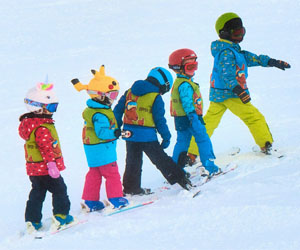
Skiing and snowboarding are exhilarating winter sports that offer a unique combination of adventure, physical activity, and the beauty of snow-covered landscapes. Whether you're a novice taking your first tentative turns on the slopes or an experienced enthusiast seeking to push your skills to the limit, the journey from beginner to advanced in skiing and snowboarding is a rewarding and transformative experience. In this article, we'll explore the stages of progression in these winter sports, from the basics to advanced techniques.
The Beginner Stage:
As a novice, the journey begins with a focus on mastering the fundamental skills. For both skiing and snowboarding, this includes:
1. Equipment Familiarization: You'll become acquainted with your gear, which includes skis, boots, and poles for skiing, or a snowboard and boots for snowboarding. Proper equipment is crucial for safety and performance.
2. Balance And Stance: Finding the right balance and learning how to stand and glide on your equipment is the cornerstone of successful skiing and snowboarding. Beginners often start by practicing on gentle slopes to develop their balance.
3. Turning And Stopping: Learning how to turn and stop effectively is key to controlling your speed and navigating the slopes safely. Novices generally begin with wedge turns in skiing and heel-side edge control in snowboarding.
4. Snowplow And Basic Maneuvers: In the beginner stage, you'll use the snowplow (or "pizza" for skiers) to control your speed and make controlled descents. Snowplow turns and basic maneuvers help you navigate the slopes with confidence.
Intermediate Progression:
As you gain confidence and proficiency, you'll transition to the intermediate stage, where you can explore more challenging terrain and techniques:
1. Parallel Turns: For both skiing and snowboarding, transitioning from wedge or heel-side edge turns to parallel turns is a significant milestone. This allows for smoother and more efficient maneuvering.
2. Terrain Variety: Intermediate riders are encouraged to explore different types of terrain, such as blue (intermediate) slopes and varied snow conditions. This stage is all about building confidence and improving technique.
3. Speed Control And Carving: Intermediate skiers and snowboarders work on mastering speed control and carving techniques. Carving involves using the edges of the skis or snowboard to create smooth, controlled turns.
Advanced Skills:
For those who aspire to become advanced riders, the journey involves mastering a range of skills:
1. Advanced Turns: In advanced skiing and snowboarding, the focus is on executing advanced turns, such as short-radius turns, long-radius turns, and dynamic carving turns.
2. Powder Riding And Off-Piste Exploration: Advanced riders can navigate powder snow and venture into off-piste (ungroomed) terrain. Learning to adapt to varying snow conditions and challenging terrain is part of the thrill.
3. Freestyle And Tricks: For snowboarders, mastering freestyle skills, like jumps, grabs, spins, and tricks, adds an exciting dimension to their riding. Advanced skiers can explore terrain park features and jumps.
4. Steep Slope And Mogul Riding: Advanced skiers and snowboarders are comfortable tackling steep slopes and navigating through mogul fields. These skills demand precision, control, and quick decision-making.
5. Backcountry And Adventure Skiing: The most advanced riders often venture into the backcountry, where they can explore untracked terrain, couloirs, and challenging descents. This level requires avalanche safety knowledge and experience.
The journey from beginner to advanced skiing and snowboarding is a path of continuous growth and development. It's a journey that offers adventure, excitement, and an appreciation for the beauty of the winter landscape. Whether you're taking your first turns or pushing your limits with advanced tricks and off-piste exploration, the world of skiing and snowboarding offers endless opportunities for improvement and a lifetime of exhilarating experiences on the slopes.
Embracing The Call Of The Untamed
 Embracing The Unknown: Exploration and adventure in the wild often involve stepping out of one's comfort zone and embracing the unknown. It's about challenging oneself physically and mentally, venturing into unfamiliar terrain, and experiencing the thrill of the unexpected.
Embracing The Unknown: Exploration and adventure in the wild often involve stepping out of one's comfort zone and embracing the unknown. It's about challenging oneself physically and mentally, venturing into unfamiliar terrain, and experiencing the thrill of the unexpected.
Serenity In The Wilderness: One of the most profound aspects of venturing into the wild is the serenity it provides. In the midst of remote forests, vast deserts, or towering mountains, the noise of the modern world fades away, replaced by the sounds of nature. It's an opportunity to reconnect with one's inner self and experience profound moments of peace and introspection.
Challenging Terrains: Conquering challenging terrains is a central element of wild exploration. From scaling towering peaks to navigating dense jungles or traversing arid deserts, each terrain presents its own unique set of challenges. These challenges test one's physical and mental fortitude, fostering growth and self-discovery.
The Thrill Of The Unknown: The thrill of the unknown is an exhilarating aspect of wild adventure. Every twist and turn in the trail, every hidden waterfall or secret cave, and every encounter with wildlife or the elements provides a rush of excitement. The element of surprise keeps adventurers engaged and creates lasting memories.
Connecting With Nature: Exploration and adventure in the wild allow individuals to connect with nature on a deep and personal level. It's a chance to witness the beauty and complexity of the natural world, fostering a sense of responsibility and a desire to protect these precious ecosystems.
Survival Skills And Self-Reliance: Venturing into the wild often necessitates the development of survival skills and self-reliance.


Surfboard Designs For Beginners
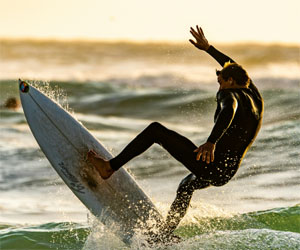 Longboards: The Stable Platform
Longboards: The Stable Platform
Longboards, often over 8 feet in length, are the classic choice for beginners. These surfboards provide unmatched stability and buoyancy, making them an ideal starting point. Key features of longboards for beginners include:
Length: Longboards are longer, which means more stability and room for paddling.
Width: Their width provides additional stability, making it easier for beginners to find their balance.
Volume: Longboards have ample volume, aiding in buoyancy and making it easier for novice surfers to catch smaller waves.
Longboards are perfect for learning the basics of paddling, balancing, and wave-catching. They offer a forgiving platform for new surfers, allowing them to gain confidence and experience the joy of riding waves.
Foam Boards: The Soft Landing
Foam boards, or soft-top surfboards, are another excellent choice for beginners. These boards are constructed with a soft, foam-covered deck, making them exceptionally safe for newcomers. Key features of foam boards include:
Fitness Improvement For Beginners
 2. Start Slowly: One of the most common mistakes beginners make is starting too aggressively. It's crucial to ease into your fitness routine to avoid burnout and injury. Begin with activities you enjoy and are comfortable with, even if they are less intense. You can gradually increase the intensity as your fitness level improves.
2. Start Slowly: One of the most common mistakes beginners make is starting too aggressively. It's crucial to ease into your fitness routine to avoid burnout and injury. Begin with activities you enjoy and are comfortable with, even if they are less intense. You can gradually increase the intensity as your fitness level improves.
3. Create A Structured Plan: Having a structured fitness plan can help you stay on track. This plan should include the type of exercise, the frequency, and the duration of each session. It can also be helpful to have a specific time set aside for your workouts.
4. Consistency Is Key: Consistency is the bedrock of fitness improvement. Make a commitment to sticking to your plan, even when motivation wanes. Establishing a routine and making exercise a non-negotiable part of your day will help you stay on course.
5. Embrace Variety: Variety in your workouts can keep things interesting and prevent boredom. Mix different forms of exercise, such as cardio, strength training, flexibility exercises, and even outdoor activities. Variety can also help prevent overuse injuries and promote overall fitness.
6. Listen To Your Body: Paying attention to your body is essential. If you experience pain, dizziness, or extreme discomfort during your workouts, stop immediately. Ignoring these signals can lead to injuries.
7. Proper Nutrition: A well-balanced diet is an integral part of any fitness improvement plan. Ensure you're getting the necessary nutrients to fuel your body for exercise and support recovery. Consult with a nutritionist or dietitian if needed.
8. Stay Hydrated: Proper hydration is critical for overall health and fitness. Drink enough water before, during, and after your workouts to stay properly hydrated.
9. Get Adequate Rest: Rest and recovery are just as important as exercise. Allow your body time to recuperate by getting enough sleep, as it is when your body repairs and grows stronger.
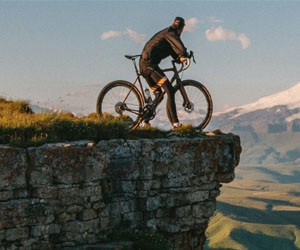
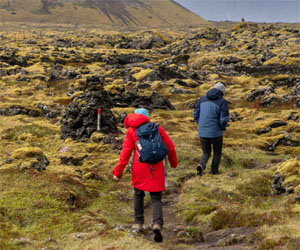
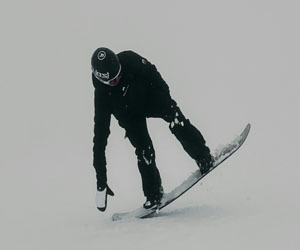
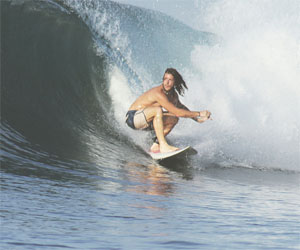
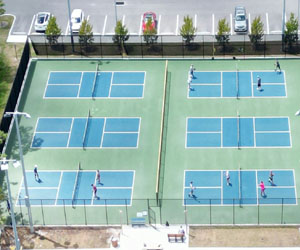

 Ultimate Frisbee's origins in the counterculture movement of the 1960s are a significant part of its legacy. It reflects the spirit of that era, with an emphasis on peace, cooperation, and a rejection of traditional authority figures. The sport's early enthusiasts were drawn to its inclusive nature, where all genders and abilities were welcome, and players were encouraged to resolve disputes amicably. This ethos continues to shape the sport's culture and is evident in the high level of sportsmanship that players are expected to uphold, making it unique among competitive team sports.
Ultimate Frisbee's origins in the counterculture movement of the 1960s are a significant part of its legacy. It reflects the spirit of that era, with an emphasis on peace, cooperation, and a rejection of traditional authority figures. The sport's early enthusiasts were drawn to its inclusive nature, where all genders and abilities were welcome, and players were encouraged to resolve disputes amicably. This ethos continues to shape the sport's culture and is evident in the high level of sportsmanship that players are expected to uphold, making it unique among competitive team sports.
Over the years, Ultimate Frisbee has grown exponentially, expanding to all corners of the globe. It gained recognition as a legitimate sport and established governing bodies like USA Ultimate, which sets the rules and standards for the game in the United States. The sport's presence at the World Games and the World Flying Disc Federation World Ultimate Club Championships underscores its international reach.
One of the most remarkable aspects of Ultimate Frisbee's legacy is its inclusive and diverse community. Players hail from a wide range of backgrounds and cultures, and gender equity is a core value, with many teams embracing mixed-gender play. The sport's emphasis on fair play and mutual respect has fostered a close-knit global community that supports growth and development in new regions.
The legacy of Ultimate Frisbee extends beyond the playing field. The sport has inspired countless individuals to become ambassadors of the game, coaching and teaching the next generation. It has also contributed to the development of valuable life skills such as teamwork, communication, and conflict resolution, making it a popular choice in educational institutions.
Elevating Your Game
 Stacking: Stacking is a strategic positioning technique that can give your team a tactical advantage. By positioning yourselves in a specific formation on the court, you can exploit your opponents' weaknesses and create opportunities for aggressive plays. Stacking is particularly effective when you have players with different dominant hands or strengths.
Stacking: Stacking is a strategic positioning technique that can give your team a tactical advantage. By positioning yourselves in a specific formation on the court, you can exploit your opponents' weaknesses and create opportunities for aggressive plays. Stacking is particularly effective when you have players with different dominant hands or strengths.
The "Two-Up, Two-Back" Strategy: This strategic innovation emphasizes teamwork and court coverage. Two players move forward to control the net, while the other two players stay back to cover the baseline. This approach ensures that the net is controlled and that any balls hit deep to the back of the court are effectively covered. It's a great way to maintain a balanced defense and offense.
Cross-Court Dinking: Dinking, a short, soft exchange over the net, is a fundamental aspect of pickleball. Cross-court dinking involves hitting the ball diagonally across the net, which can be more challenging for your opponents to handle. This strategic innovation keeps your opponents off balance and opens up opportunities for unforced errors.
The Erne Shot: The Erne shot is a daring strategic move that involves leaping to the side of the court while your opponent is hitting a ball down the line. It's a high-risk, high-reward maneuver that can catch your opponent off guard and create open spaces on the court.